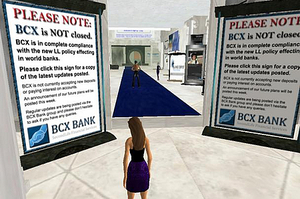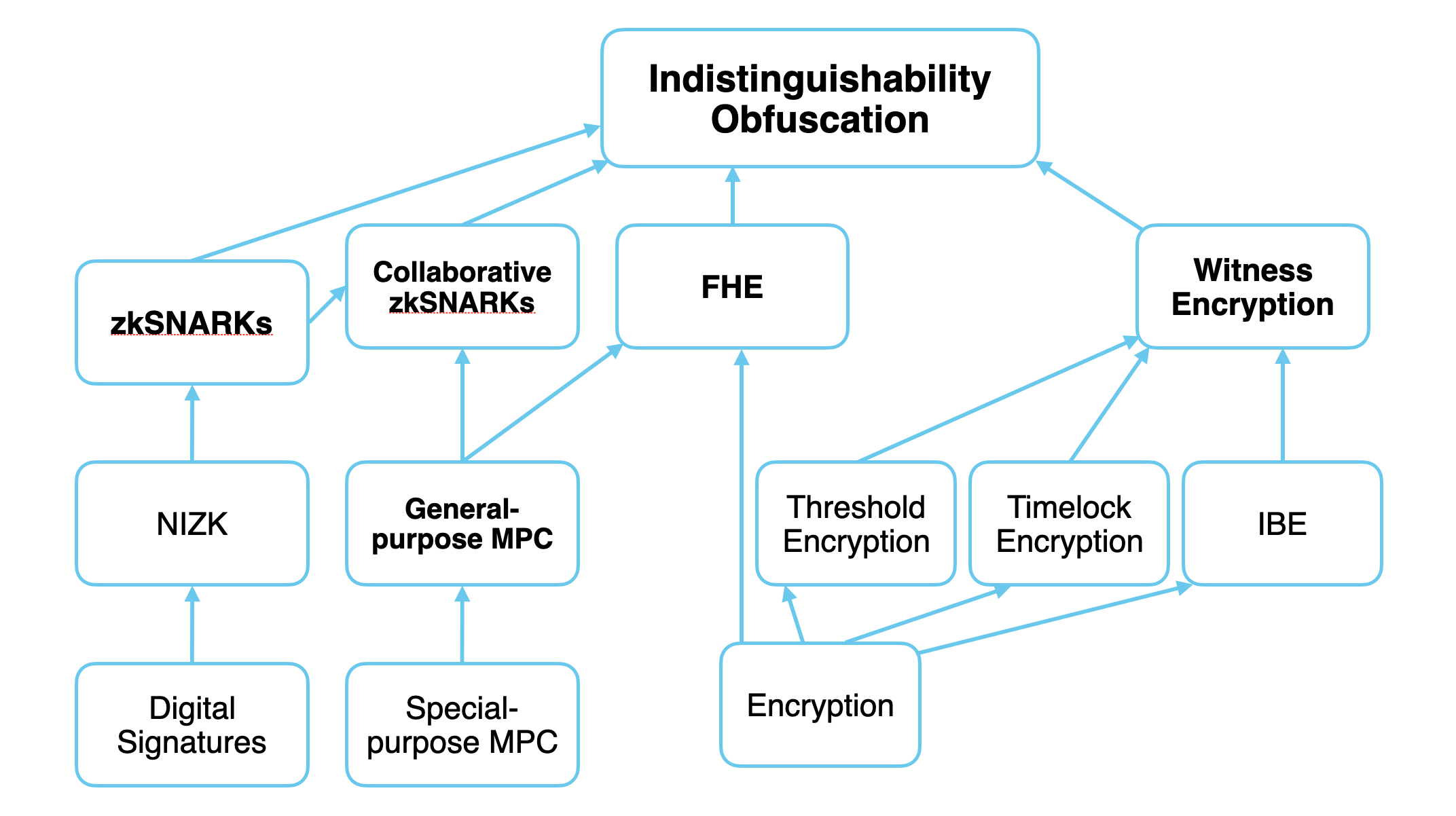From Escapism to Realism: Manifesting Universes with Idealized Mathematical Objects
Abstract
With progressing information technology, humans increasingly escape into shared fictions that, unlike physical reality, depend on belief to exist. Idealized mathematical objects, if achieved through cryptographic techniques, offer an alternative due to their objective independent existence. These objects would autonomously-operate, maintain their own secrets, and grow unbounded in complexity. They may transform shared fictions into objectively real universes that are enriching for humans to inhabit rather than escapist.
I. Escapist Fictions
Objective physical reality, governed by immutable natural laws, exists independently of human belief - gravity works whether we acknowledge it or not. This provides a robust foundation to exist on, but at the cost of customization. We cannot edit physical laws to spawn a metallic element with an ideal supply curve and fair distribution across Earth.
Unlike immutable physical laws, shared fictions are customizable to our choosing. As shown in Figures 1 and 2, as information technologies have expanded our capacity to construct shared fictions, we have increasingly escaped the "state of nature" to inhabit them1.
Unlike objective physical reality, shared fictions depend on belief in an attesting authority. When this authority falters, as shown in Figure 3, the shared fiction dissolves - often with devastating consequences. Shared fictions offer customization at the cost of robustness.
Figure 1. The progressive development of information technology.






Figure 2. The corresponding increase in scale and sophistication of shared fictions.




Figure 3. The dissolution of shared fictions when belief in the attesting authority collapses.



Shared fictions will become increasingly sophisticated - generative simulations connected to our sensorium with AI and BCI technologies. However, they will always require escapism to inhabit because they depend on belief to exist and are never unanimously accepted like physical reality. As a result of the escapism, fictions remain dissolvable, risky to invest in, and fundamentally separate from reality2.
II. Mathematical Platonism
Mathematical platonism offers a solution. It asserts that mathematical objects exist objectively and independently of belief; this allows them to achieve unanimous acceptance on par with physical reality3. As shown in Figure 4, these objects have long been used to represent physical reality and successfully act within it, often when shared fictions failed.
Figure 4. The transition from fictional to mathematical representation of physical reality.




Beyond mere representation, mathematical objects have even begun manifesting new aspects of reality. Hash functions assign IDs to each unique piece of information - like fingerprints everyone sees, with no shared fictions necessary. Digital signatures prove information authorship with more unforgeability than physical signatures. Bitcoin, using these techniques, created a scarcity that objectively exists outside of physical spacetime and independently of belief in any attesting authority.
Mathematics' "unreasonable effectiveness" in bridging the physical and mental worlds, as seen in Figure 5, both represents and manifests new aspects of reality. Taking this to its logical conclusion reveals a profound implication: all mathematically-consistent universes may objectively exist, with our physical spacetime merely being the particular structure we currently observe. We may eventually manifest and truly inhabit, without any escapism, the ones of our choosing4. However, the mathematical objects we can currently represent are too primitive for such complexity and scale.
Figure 5. The uninhabted platonic mathematical universe.

The objective physical world, the subjective mental world, and the Platonic mathematical world as a bridge between the two. Humanity has settled the physical world with industrial technology, and developed our mental world with information technology, but hasn't yet manifested the platonic mathematical world. Adapted from Roger Penrose's 2007 book, The Road to Reality
III. Idealized Mathematical Objects
Mathematical objects exist abstractly, so we represent them symbolically. Written language enabled static symbolic representation, and electrical encoding advanced it into dynamic symbolic manipulation. By harnessing this advancement using networked computing, communication evolved from static text letters to the dynamic multimedia web of today, growing shared fictions into the size of entire cyberspaces in the process.
Cryptographic techniques, as shown in Figure 6, applied to networked computing are now similarly evolving mathematical objects from static forms to their dynamic, idealized endstate. These idealized mathematical objects, if achieved, would autonomously self-operate, maintain their own secrets, serve everyone neutrally, and grow to unbounded complexity5.
Figure 6. The cryptography development tree.

Fully-homomorphic encryption allows computation over a single source of private data without leaking the data or the output of the computation. Multi-party computation allows computation over multiple sources of private data without leaking the data but revealing the output of the computation. zkSNARKs prove correct execution of a computation on inputs kept private by the computer's owner. Witness encryption encrypts a message that can only be decrypted with a proof of a specific computation. Obfuscation allows a party to execute encrypted computation and produce correct outputs without seeing inputs or even the program. From gubsheep's 2024 essay, Programmable Cryptography
IV. Manifesting Realism
Today, billions have escaped to cyberspaces - shared fictions dependent on corporate authorities. This dependence restricts cyberspaces to malleable business logic that only the corporation can upgrade or scale, where user actions remain temporary event logs that cannot connect to their broader lives without corporate permission. Removal of this dependence would remove the requirement for escapism and make cyberspaces enriching to reality rather than separate from it.
As shown in Figure 7, idealized mathematical objects operate as immutable laws existing independently of authority. Users would collectively run, upgrade, and scale the resulting cyberspace themselves, with every action becoming a permanent, objectively verifiable record that permissionlessly connects with their broader lives. Cyberspaces would transition from escapist diversions to enriching expansions of reality.
Figure 7. A mathematical cyberspace for a realist experience.

Servers need administrative control, corporations have financial and legal constraints, and computation requires data visibility. Truly public or truly private computation is not possible. As a result, corporate servers can only implement malleable business logic. This malleability means digital symbols cannot objectively achieve the properties of physical matter: non-fungibility, scarcity, embodiment, and intrinsic value. Furthermore, only corporations can validate state and actions within a cyberspace - Twitter can assert your follower count, Bob cannot. As a result, only the corporation can implement upgrades or operate servers, and users cannot freely exchange data or assets beyond the system's boundaries without the corporation's permission.
(B) An idealized mathematical object operates as Digital Physics, man-made laws which are immutable, unbreakable, and contain unleakable secrets. They perform both truly public and truly private computation. This grants physical properties to digital symbols, and may culminate in creating Digital Matter itself: nonfungible, scarce, embodied, and intrinsically valuable within Digital Physics. (C) (D) Digital Physics and Matter create credibly neutral rules and systems of value inside of which user actions become permanent, objectively verifiable records that permissionlessly connect to their broader lives. For example, users within the cyberspace can: configure a building door to only open for proof-holders of posting on a subreddit, or secure a real loan using an emerald ore chest as collateral. (A) Beyond participation, users can even contribute resources and propose upgrades to the cyberspace itself.
(B) An idealized mathematical object operates as Digital Physics, man-made laws which are immutable, unbreakable, and contain unleakable secrets. They perform both truly public and truly private computation. This grants physical properties to digital symbols, and may culminate in creating Digital Matter itself: nonfungible, scarce, embodied, and intrinsically valuable within Digital Physics. (C) (D) Digital Physics and Matter create credibly neutral rules and systems of value inside of which user actions become permanent, objectively verifiable records that permissionlessly connect to their broader lives. For example, users within the cyberspace can: configure a building door to only open for proof-holders of posting on a subreddit, or secure a real loan using an emerald ore chest as collateral. (A) Beyond participation, users can even contribute resources and propose upgrades to the cyberspace itself.
As societies emerge in a mathematical cyberspace and enrich users' broader lives, Digital Matter - required for all user actions - accrues value. This incentivizes collective improvements from stakeholders to advance the mathematical cyberspace towards its idealized endstate of manifesting an entire universe. One that is objectively real, sensorially equivalent, infinitely imaginable, and enriching for humans to inhabit6.